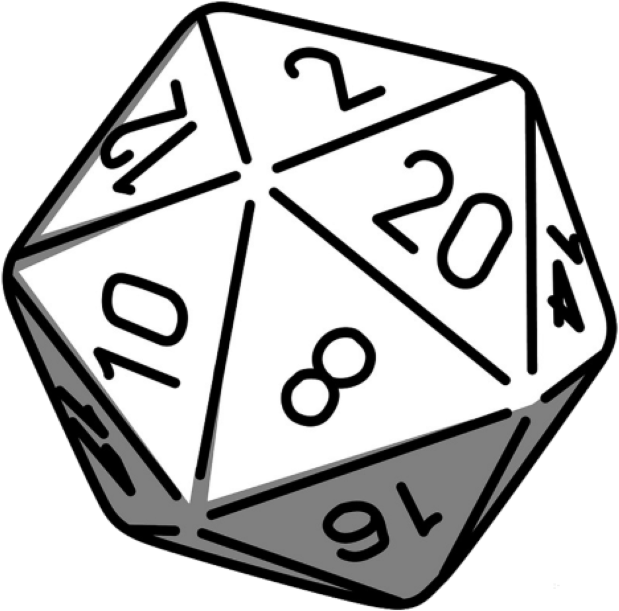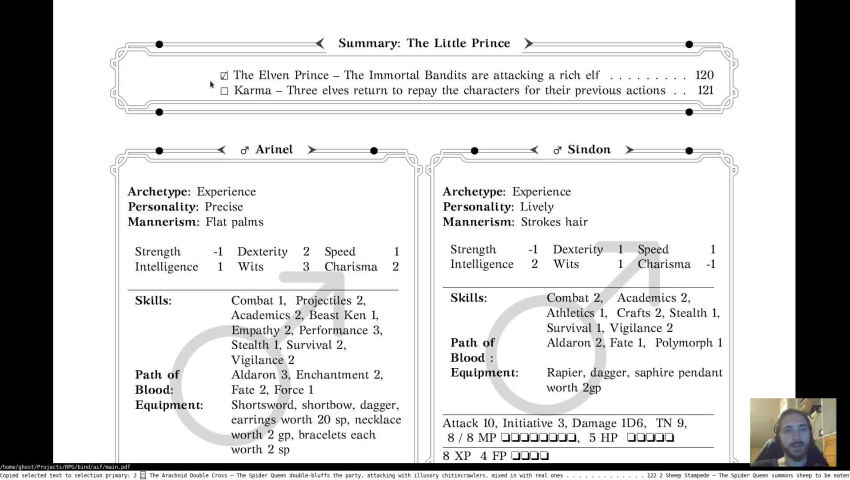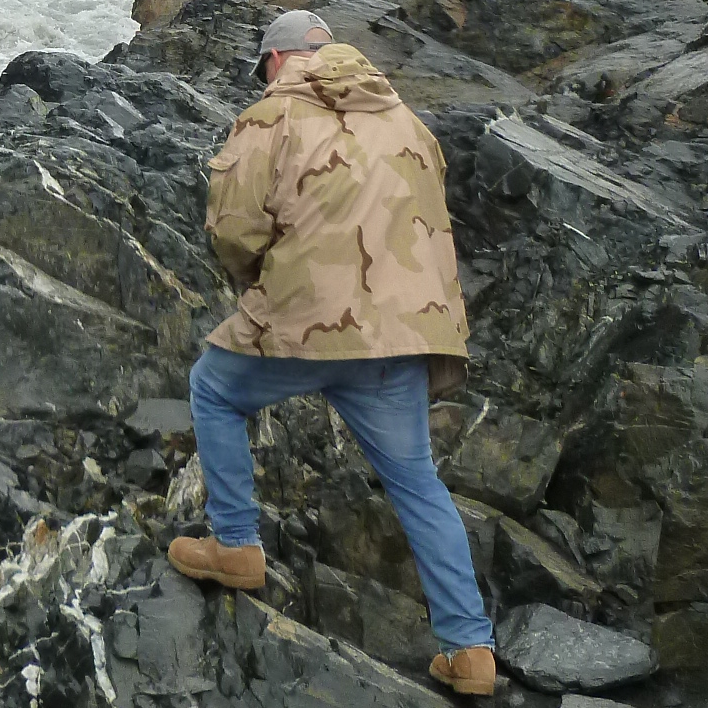This is my method of constructing ‘adventures’, and it’s been working really well for the past few years.
I need to work on my Latex skills, that doc looks real nice.
One drawback I’ve found with this approach, with the “no matter which forest they go to, this will happen” and the “no matter when they return to the ale’s guild story, this will happen” approach, is that the DM gets a lot of responsibility for any opposition the player characters might end up fighting. This means responsibility for game balance, and if there’s a TPK (or if, conversely, the fight’s a total steamrolly breeze) it’s the DM’s fault. I’ve seen a lot of DM’s with this kind of setup end up fudging dice or monster stats or behavior on the fly because of this. (Or switch to a rule system where there aren’t any fights, like Cthulhu Dark or Archipelago.)
Additionally, with preset scenes and steps like “the spider queen is going to escape almost guaranteed” there’s not a lot of agency for the players to contribute to the story and there’s not a lot of tension about what could really happen. The DM knows what’s gonna happen. You end up with these branching paths and trying to cover all outcomes.
Instead, what I do now is maps. Maps, maps, maps. Most often location maps (but they can also be relationship “maps”, as in relationship graphs that the players can explore, like how in the movie Knives Out the detective is exploring who all the suspects are and how they relate to one another). But usually I like location maps. I have a lot of stuff on the map (“in this room there’s a spider-elf!”) and I also have a lot of stuff on the random encounter tables (“on a 21, there’s an elven prince getting robbed by [roll again]”).
When I first encountered text adventures as a child, I was smitten by them and I wanted to make them. I first thought that they worked like a choose-your-own-adventure book or a flowchart, like a movie script but with branching paths. And, some did. But I later found out that the best ones instead were based on maps and objects that you could navigate and interact with freely.
Yes, this is at the expense at more intentional story telling. It forces me to think in terms of evocative moments, instead of in bigger arcs. But it’s so great because anything can happen. It feels like a living breathing world that I daydream about and want to return to. It also makes the players choices, both in game and when making their characters and interacting with the rules, the mechanics, the spells, the NPCs, the items, the traps, it makes all of that really matter and have a huge impact on what happens.
the DM gets a lot of responsibility for any opposition the player characters might end up fighting. This means responsibility for game balance
I hadn’t thought of that - it’d be a problem for games which ramp up power levels. My games have always had a slow-burn on the power levels, and mechanics for running away, so there’s no ‘level 10 ogre crushes party’ problems.
with preset scenes and steps like “the spider queen is going to escape almost guaranteed” there’s not a lot of agency
This is down to encounter balance. Ideally, the existence of one scene shouldn’t depend too much on the previous encounters, but how it plays out can totally depend on others. E.g. in ‘The Little Prince’, how the characters treat the elven prince tells you how the other elves treat them later (but that second encounter can always run).
If that doesn’t work, the idea’s to just scrap or change the rest of the encounters. If the campaign has 12 Side Quests and one gets scrapped half way through, it’s no tragedy, because they’re ‘cheap’.
evocative moments
I was trying to do something like this at the start of this system. It’s kinda ballooned outwards since then, though some of the Side Quetss are still just one encounter.
Maps, maps, maps
Yea, locations are still necessary, so the Side Quests often have this build in. I should get around to making maps for the game sometime.
Great points, esp re mechanics of different systems including a codified system for running away. This is in BIND, right? Interesting.
As for the maps, it’s not just that I have maps. It’s that the entire prep is location-based rather than scene-based. Free exploration and interaction rather than “this happens, then this happens, then either this or that happens, then this happens”.
This worked in BIND, and also for a Dark Ages: Vampire campaign I ran.
If you’re into map-making, check out the CC-0 map pieces for GIMP in the site.
Do you post example maps?
I’ve been in TPK’s in Vampire (as a player) so it can certainly happen there. 🧛♀️ But I’m gonna check out BIND for its escape rules.
My maps are nothing fancy and I mostly use ones made by others (modules). I’ve been in the One Page Dungeon Contest a few times, though ♥




